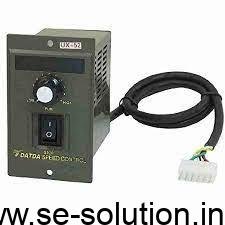DC vs AC Motor: Understanding the Key Differences
DC Motor and AC Motor are two common types of electric motors used in various applications. They differ in their construction, operation, and applications. Let’s explore the key differences between these two types:
1. Power Source difference between dc vs ac motor :

– DC Motor: A DC (Direct Current) motor operates on a direct current power supply. It uses a split-ring commutator and brushes to convert alternating current into direct current within the motor.
– AC Motor: An AC (Alternating Current) motor runs on an alternating current power supply. It does not require a commutator as the direction of the current in its windings changes periodically.
2. Commutation:

– DC Motor: DC motors have mechanical commutation, which involves physical brushes and a commutator. The brushes change the direction of the current in the rotor windings, creating a continuous rotation.
– AC Motor: AC motors do not require commutation since the direction of the current in their stator windings changes automatically due to the alternating current.
3. Speed Control:

– DC Motor: DC motors offer smooth and precise speed control by adjusting the voltage applied to the armature winding. This feature makes them suitable for applications requiring variable speeds.
– AC Motor: AC motors have less precise speed control than DC motors. While some speed control is possible with voltage or frequency adjustments, it is generally not as fine-tuned as DC motors.
4. Efficiency:

– DC Motor: DC motors tend to be more efficient at lower speeds and when operating at partial loads. However, their overall efficiency is lower compared to modern AC motor designs at higher speeds and full loads.
– AC Motor: AC motors have higher overall efficiency, especially in high-speed and full-load conditions. This makes them more suitable for many industrial and commercial applications.
5. Maintenance:

– DC Motor: DC motors require more maintenance due to the wear and tear on brushes and commutators. Regular inspections and replacements of these components are necessary to ensure optimal performance.
– AC Motor: AC motors have a simpler construction without brushes and commutators, leading to reduced maintenance requirements and longer service life.
6. Applications:

– DC Motor: DC motors find applications in small electronic devices, battery-operated tools, electric vehicles, and applications where precise speed control is crucial, such as robotics and conveyor systems.
– AC Motor: AC motors are widely used in industrial machinery, household appliances, HVAC systems, pumps, fans, and various other applications that require constant speed operation.
In summary of dc vs ac motor , DC motors are known for their precise speed control and suitability for low-speed applications, while AC motors offer higher efficiency, lower maintenance, and are well-suited for high-speed and constant-speed applications. The choice between DC and AC motors depends on the specific requirements of the application and the desired performance characteristics.
FOR MORE ELECTRICAL KNOWLEDGE PLEASE VISIT TO OUR YOUTUBE CHANNEL SE SOLUTION BY YOUR SUPPORT WE REACHED 4 LAKH+ SUBSCRIBERS

AND FOR MORE WINDING DATA YOU CAN SEARCH IT HERE ON OUR WEBSITE
I HOPE YOU LIKED THE WEBSITE

